Don’t know what a 52 Fuji is? Check out this page.
After a pleasant night’s sleep right next door to Shin-Fuji it was up with the birds to inch ever closer to the completion of this nutso list of mine.
You may remember that Shin-Fuji is situated in a pretty ridiculous part of town in terms of commuter convenience, being a twenty minute walk from the centre. I don’t think I mentioned that there are also only a couple of buses a day. Given the location of my starting point relative to where Gakunan-Fujioka was situated, it seemed to me that the smart move would be to run there.
It also meant I could take a route in the direction of Fuji City Hall. Not so I could register a birth or my own existence, but so I could stop by the park nearby to visit an old friend:

Just up the road from here is Yoshiwara bus centre, and I was pleasantly surprised to see another old landmark was still in place, even if it was up for sale:

The Yoshiwara part of Fuji city is, if I recall correctly, where the actual city began. Slowly, over time, the centre evolved around the Oji paper factory and the station there became the destination of choice instead.
Yoshiwara feels a lot more like a place where people lead daily lives. I never really got to know this part of town; fifteen years ago, I lived on the other side of the city, as far from factories as is feasible in Fuji. Running down the high street on a beautiful sunny September morning, I kind of wish I had gotten more familiar with it.
This feeling lasted about as long as it took for me to pass into what I’ll call Jatco territory, the transmission manufacturers whose factories cover an ample section of land outside Yoshiwara. All these grey buildings with their warehouses and girders and safety protocol posters and corrugated exteriors blur into one, so I doubt it’s all Jatco property. Mind you, I couldn’t name another single company who operates round this way. I need space in my brain pan for more useful information, like stations whose names feature the word ‘Fuji’.
The Gakunan Line started life as a Nissan subsidiary in 1936. It was established as a freight service with the aim of building up an industrial centre in Fuji City, so um, gee thanks guys I guess… In the late forties, passenger service began and nowadays, that’s all it’s used for – no more freight service at all. I’m always tickled by how things evolve and change over time.
Gakunan Fujioka station is pretty unique, a kids clubhouse from an old Saturday morning cartoon come to life:

The view from the platform is pretty neat too :

The old fashioned rolling stock on the Gakunan line, reminiscent of the trams in Matsuyama, makes me nostalgic for a time period I’m not aware of having lived through. Mayhaps memories from one of my previous existences are leaking.
From Gakunan-Fujioka, it was an entertaining train journey back to Yoshiwara, where the Gakunan line terminates, as a local character was loudly shadowing all the announcements coming over the train speaker. I got the feeling the novelty of this rapidly wears off, judging by the expressions on the faces of the other passengers.
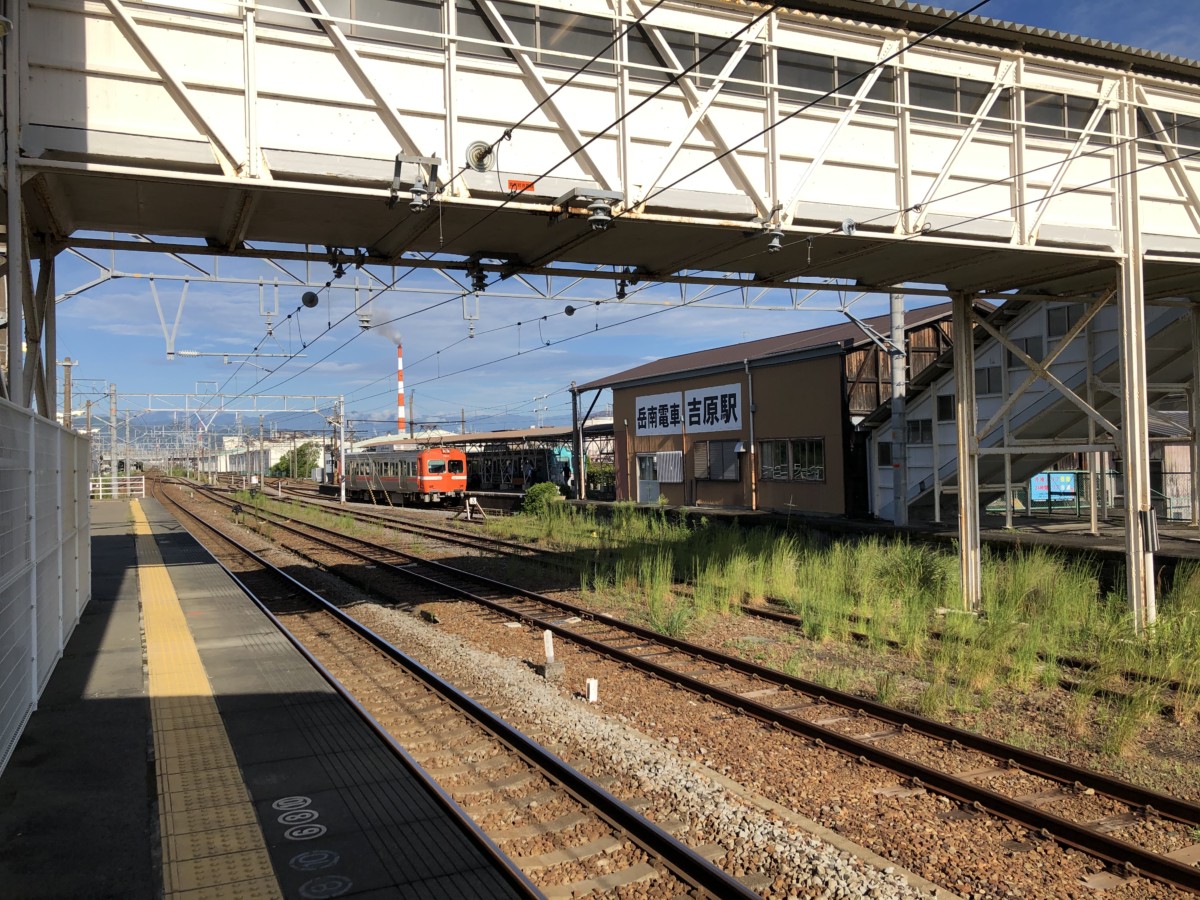
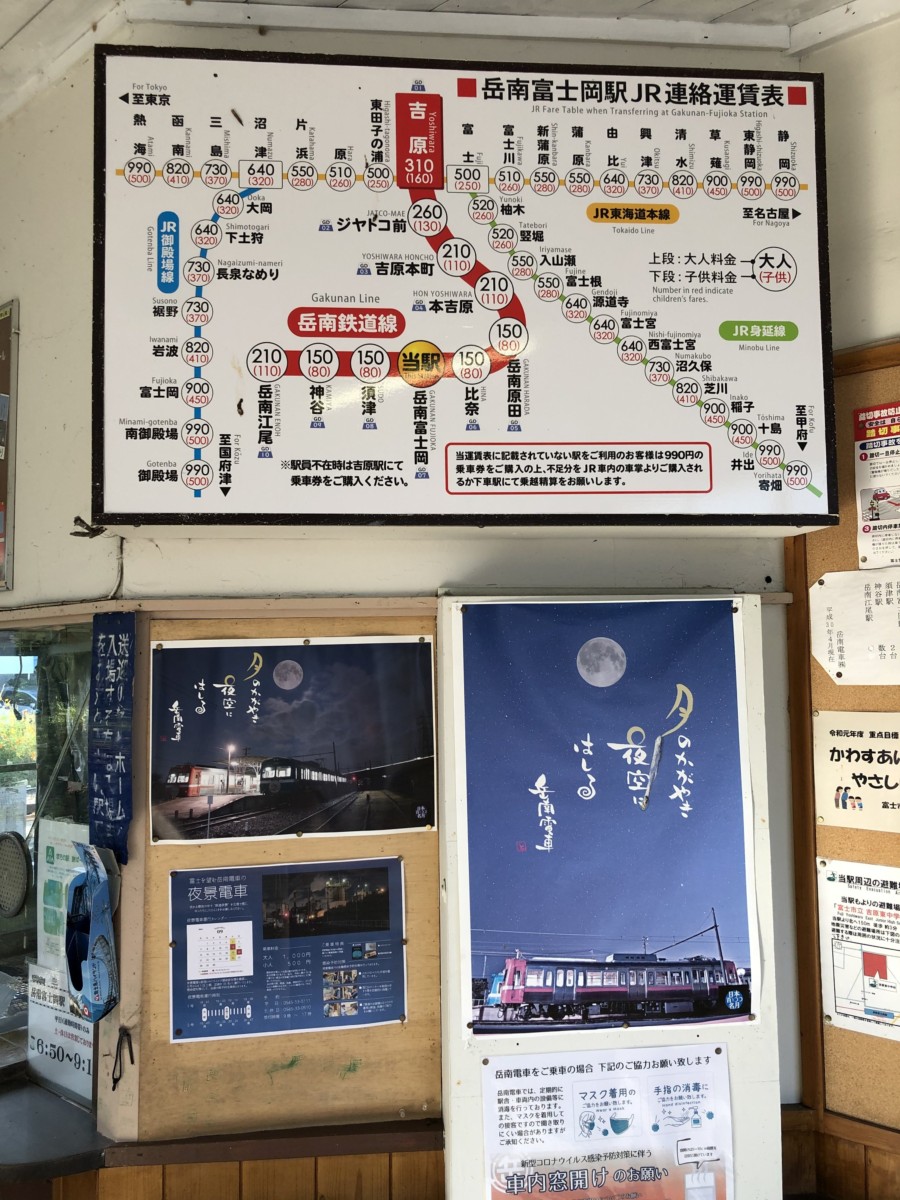
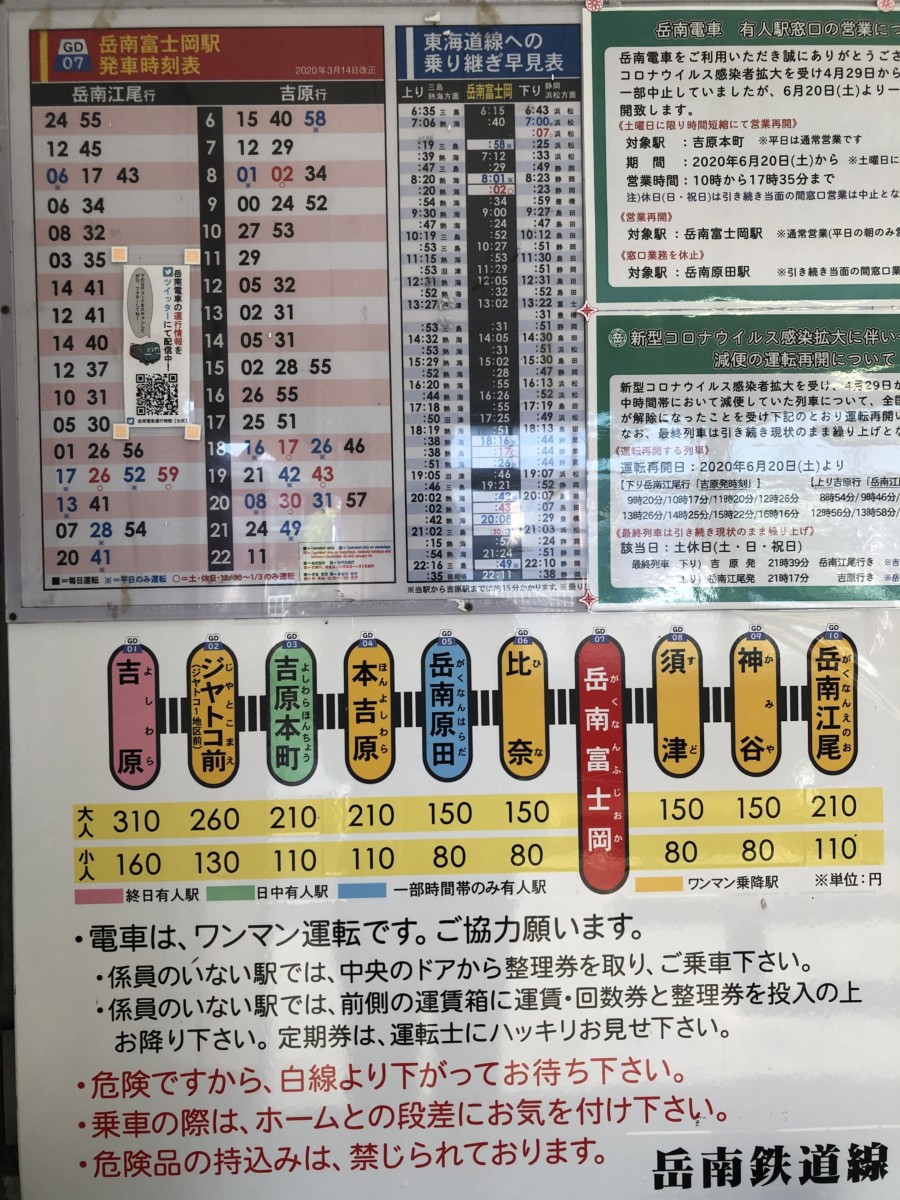

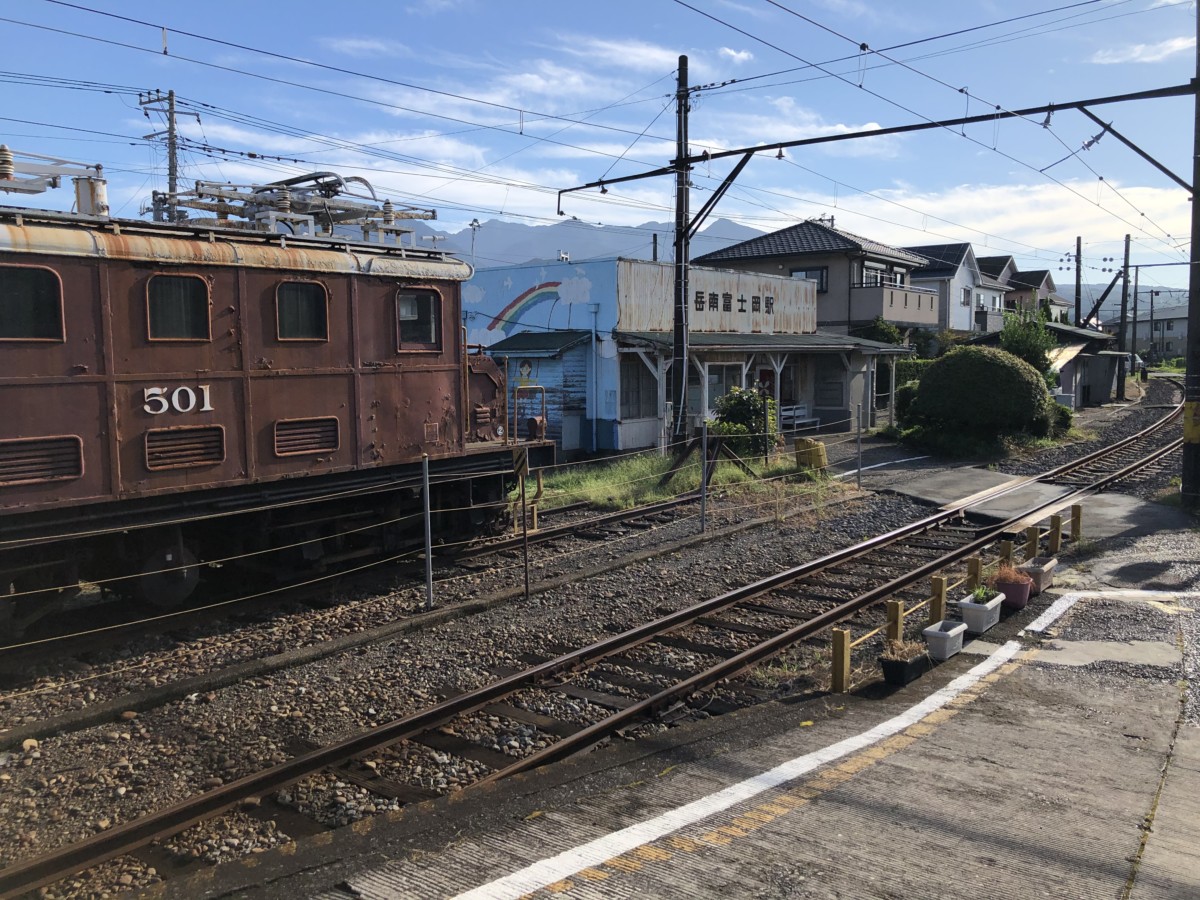
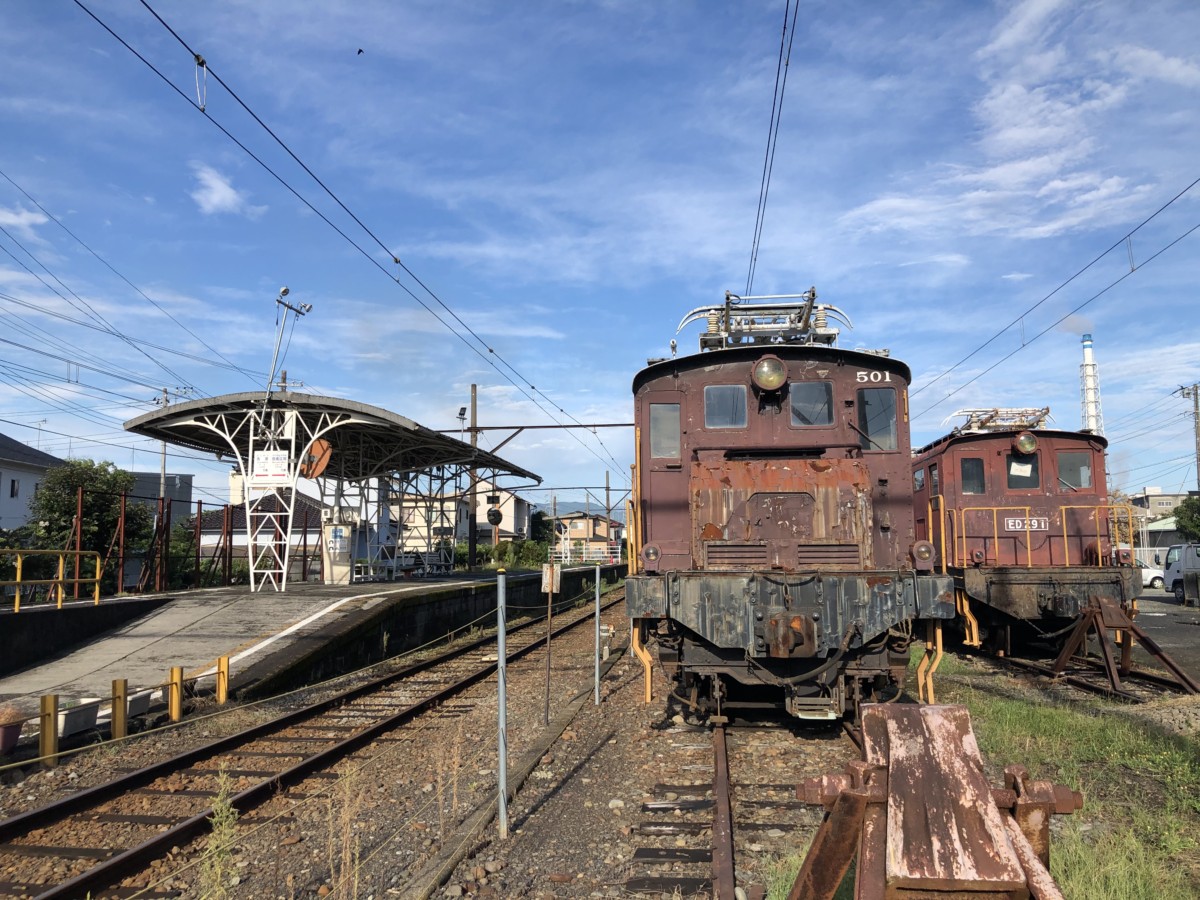
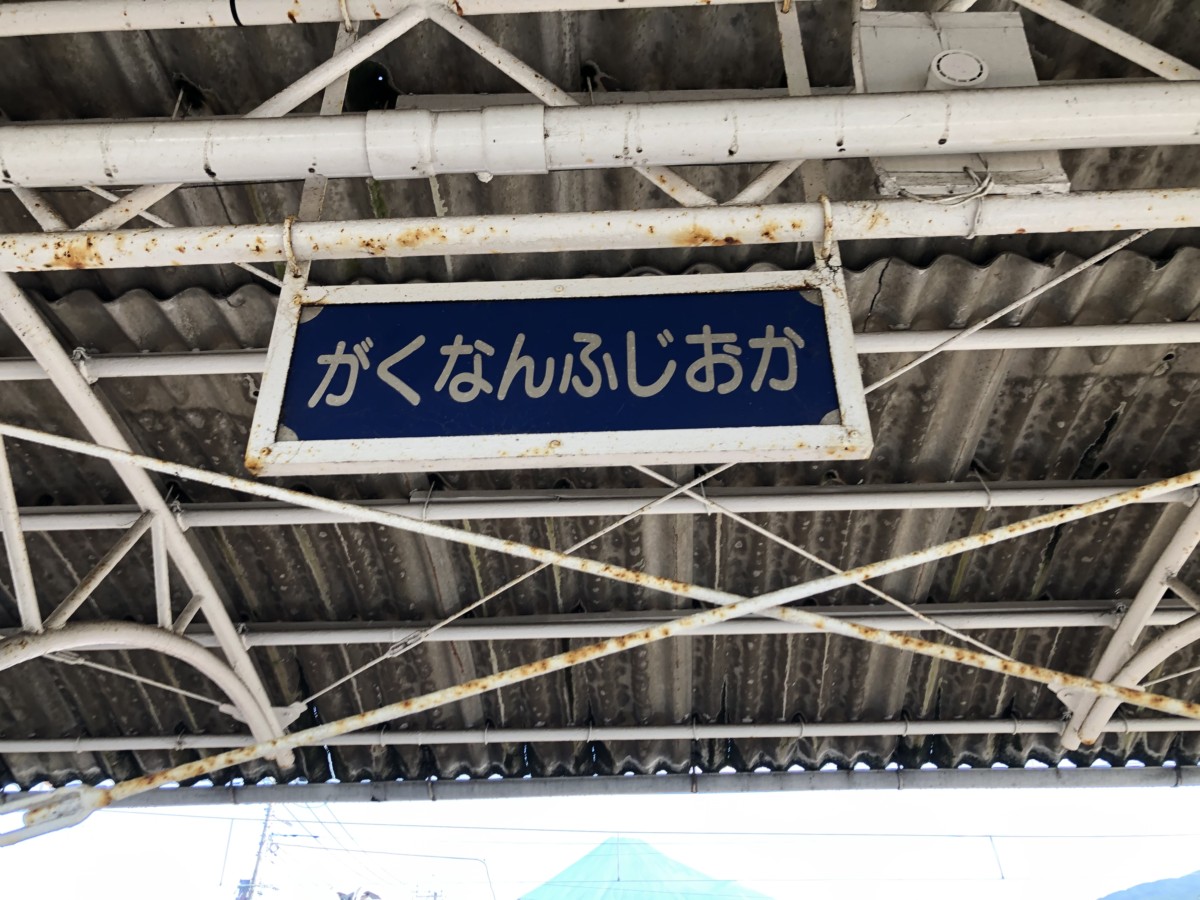



FUJIS LEFT AT THE START OF SEPTEMBER 4th, 2020 : 2/60
Leave a comment